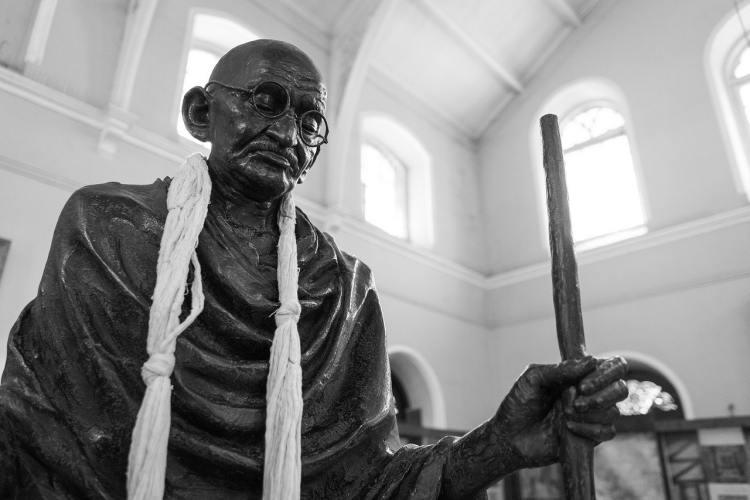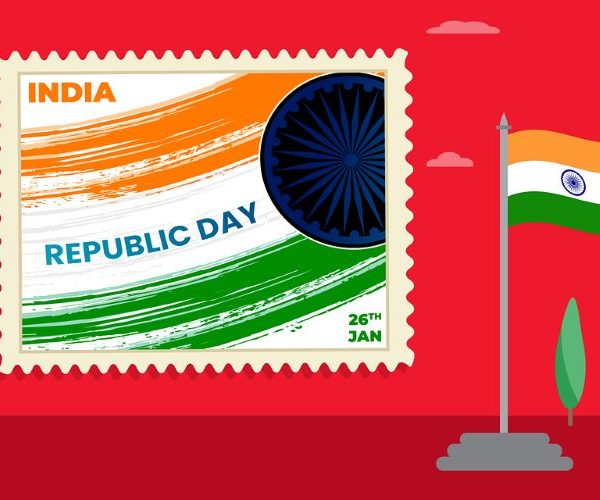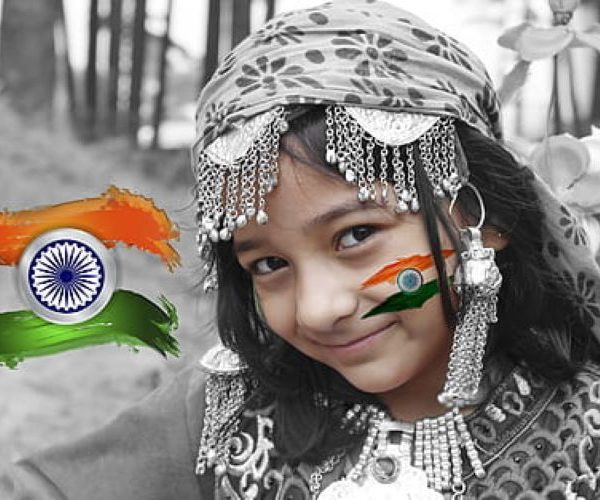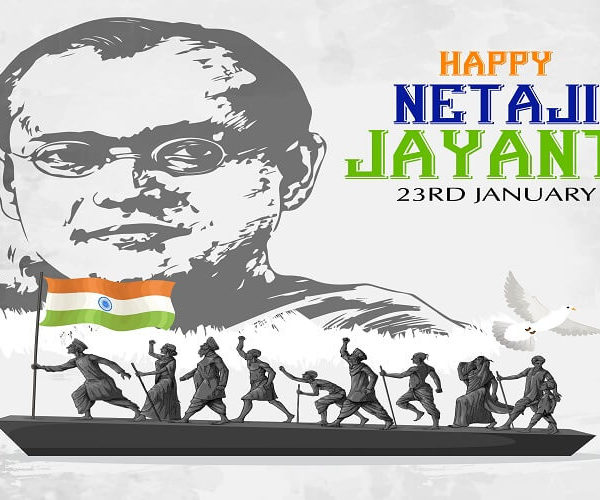When writing a paragraph there are a few things you should remember, always state your intent for writing the paragraph. You should make sure there is a proper structure in the paragraph about the topic being covered, you mustn’t jump from point to point without proper transition.
Most importantly, to write one or more paragraphs based on a particular topic you need to know all that you can about the topic before you start writing. So, let us learn all we can about Mahatma Gandhi’s life and then focus on how to use that information to write a paragraph on him.
Early Life
In 1869, on the second of October Mohandas Karamchand Gandhi was born in Porbandar, a coastal town in Gujarat. Owing to his contributions towards India’s fight for freedom he is known as Bapu or the father of the nation; he is also referred to as Mahatma, which loosely translated means a great person or soul.
He finished his college studies in Gujarat and left for England to study law. After completing his law degree in England he travelled to South Africa for work. While in South Africa he was discriminated against by the British for his skin colour; he was thrown out of train carriages and called insulting names owing to his skin colour.
This insult that he saw his fellow countrymen face drove him to stand up against the insults but he was always clear about his protests being non-violent. He was an ardent believer in the power of ahimsa or non-violence.
Initial accounts of the time show that he was sympathetic towards the cause of Indians in South Africa but was unsympathetic towards the cause of South Africans or rather the black people. Although, with time his views changed and he became actively involved in helping the black people against racism. Nelson Mandela, himself, talked about the invaluable efforts made by Gandhi to help those who suffered due to racism.
Contributions to the Freedom Struggle
After helping the people in Africa, Indians and Africans alike, he returned to India and involved himself in India’s struggle for freedom. Even back in India, his belief in non-violence did not change, he got involved with Indian National Congress in 1915.
By 1920, he had a leadership role in the Indian National Congress party. Although he did make a controversial move in 1918 where he tried to recruit people to fight for freedom by justifying the use of arms in this particular struggle, he also declared that he would never pick up arms or fight violently.
1. Civil Rights Movements that He Started
One of the first movements was the Champaran movement where he helped the farmers of Bihar get their rightful compensation for growing indigo dye from their British landlords. He moved from Bihar to Kheda which was struck by floods and famine. He tried to negotiate the ease in paying taxes and revenue by the people but when that didn’t work, he started a civil disobedience movement.
The people refused to pay taxes and revenue even under the threat of losing their livelihood or lives. Even then they refused to relax the taxes but eventually when the movement continued, they agreed to forego the revenue and taxes.
The civil disobedience movement grew larger and was adopted all over the country, people refused to follow the laws that were unfair and discriminatory. It also evolved into the non-cooperation movement, where people refused to use British goods and products.
All of these agitations and rebellious movements led to Gandhi’s arrest in multiple instances. The British were hopeful that removing the figurehead from active participation in such movements would quell the rebellious forces, but his arrest had the exact opposite effect. It riled the people up even more and strengthened their resolve to rebel against the British.
One of the most important and well-known movements was the Salt Satyagraha movement or the Dandi March. The British had increased the tax on salt to a point where most people couldn’t buy it. Gandhi tried to negotiate with the British to reduce the taxes levied on salt. Even after several tries, the British refused to reduce the charges of the tax on salt.
So, he finally decided to start a movement to make sure every family received their basic need for salt. He organized a three hundred- and eighty-eight-kilometre march from Ahmedabad to Dandi. He did this intending to produce salt on his own with the help of his followers in Dandi. As they approached their destination they were attacked by British troops.
As per Gandhi’s beliefs, they refused to resist or retaliate. The British struck them with steel lathis while they refused to even shield themselves from receiving the blows. Around 300 people were injured or killed before they stopped. Many were reported to be arrested, including Gandhi and other Indian National Congress workers.
Women wanted to be a part of the struggle but Gandhi was apprehensive of letting them be a part of the fight. He was afraid that people would think that he was using women as a shield to hide behind. But the women were resilient and joined the struggle.
After the Dandi march, the women continued resisting the British by continuing the non-cooperation movement and the civil disobedience movement. They even raided the shops that adhered to the prices that were set by the British.
2. Partition and Independence
In 1942, Gandhi declared during a speech that the British needed to “Quit India”. This was not received favorably by the British. There was a lot of unrest between the British and the Indians at the time and they retaliated by arresting Gandhi, again.
By the time Gandhi was released the political scenario had shifted in India. Due to the incarceration of many prominent Indian national congress leaders, their influence had reduced which gave rise to multiple other ideologies, including one of the most prominent parties of the time, the Muslim League.
They had a strong leader named Muhammad Ali Jinnah whose ideologies were mainly based on communal lines, unlike Gandhi who wanted a united India. Jinnah wanted a separate country for Muslims.
In 1946, due to the actions of Jinnah, there were communal riots in Bengal which resulted in its partition into Bangladesh and West Bengal. It was after this that the negotiations with the British bore some fruit, the British agreed to grant India its freedom but independence came with consequences.
They wanted Jinnah to have his wish for a separate country for Muslims, now Pakistan. The partition led to an unbelievable amount of communal violence. People of all religions suffered due to this decision and hence independence is a controversial reality.
Death
On the thirtieth of January, 1948, a Hindu Nationalist named Nathuram Godse shot Gandhi in the chest thrice at a peace rally. Godse and his co-conspirators believed that Gandhi’s complacence towards Muslims was the reason behind the violence during the partition. Godse and his co-conspirators were later tried and found guilty.
Legacy
Gandhi’s efforts in civil rights movements in India and South Africa make him a figurehead for peace because all of his movements were non-violent. Fighting for the common struggle in a non-violent way was his contribution to the world and that is why his birthday is celebrated as such.
There are prayer services all over the country and tributes are paid to him from Porbandar to Delhi. His birthday is a declared national holiday, even children are taught about his greatness and are encouraged to celebrate his life.
How to Write Paragraphs on Gandhi Jayanti?
First, we need to describe our intent for writing the paragraph and then continue to elaborate on the topic. It is important to know when a paragraph should end and make the transition from one paragraph to another smooth. Here is an example of a few paragraphs on the life of Mahatma Gandhi. Pay attention to the transition between the paragraphs. It is an important skill to master when writing.
‘Mohandas Karamchand Gandhi was born on the second October of 1869 in Porbandar, Gujarat. He is known by many names including Bapu or the father of the nation and also Mahatma. We will discuss the reasons why he is such an important figure in Indian history.
He studied law in England and then traveled to South Africa for work; there he faced discrimination and saw his fellow countrymen go through the same. This led to him starting peaceful protests in South Africa. He was an important chapter even in African history as he became a vital figurehead in their fight against racism.
After he had done everything he could in Africa, he came back to India and got involved in India’s struggle for independence. He became a leader in the Indian National Congress party and used his position to start multiple successful non-violent mass movements; for example, the Civil Disobedience Movement, the Satyagraha movement, and the Quit India movement.
The Civil Disobedience movement involved people refusing to pay the exorbitant taxes that were levied on products and boycotting British products, even under the threat of losing their lives or livelihood. The Satyagraha movement was to produce our salt as a protest against the high taxes that were being levied on it. The Quit India movement started with Gandhi simply stating in a speech for the British to simply Quit India, this led to lengthy negotiations for the British to leave India.
By the time the British decided to grant India its freedom, the political face of India had changed. There were a lot of communal elements that had influenced a lot of the people. One of these formidable forces was that of the leader of the Muslim League, Muhammad Ali Jinnah. He believed that India should be split into India and a country for the Muslims, now Pakistan.
As the British left, they struck another blow by agreeing to Jinnah’s demands making the day of independence one of controversy. There was an indescribable amount of violence between the people of all communities and it was a bloody start for both countries.
According to Hindu nationalist, Nathuram Godse, Gandhi’s complacence towards Muslims was the reason for the violence on Independence Day. This belief drove him to assassinate Gandhi in 1948 when he shot Gandhi thrice in the chest.
Gandhi’s legacy is his belief in non-violence, this has led to people all over the world revering him. Hence, it is the reason why his life is celebrated all over the country on the occasion of his birth date. There are prayer services and tribute functions in his honour.’
Conclusion
As you can see from the above example, writing paragraphs needs the skill of understanding when to transition from one paragraph to another. The more topics you explore by writing paragraphs on them, the more comfortable you will be in choosing exactly where to stop a paragraph and begin another. Information about a particular topic must be grouped in a paragraph otherwise it seems very scattered.
Sometimes it is also easier to chalk out a template about how you want to use the information you have to write or it may be easier to keep a reference piece. Try various methods and see which you are most comfortable with.







